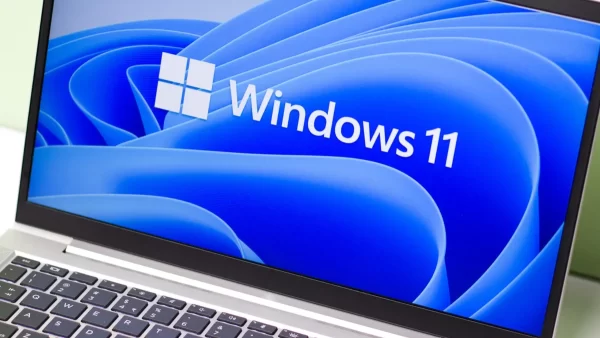
US Inflation Jumped 7.5% in 40 Years – RajkotUpdates News
In the ever-changing landscape of economics, one phenomenon has been capturing attention recently: the significant rise in US inflation. Over the past four decades, the United States has witnessed a staggering 7.5% increase in inflation rates. This article delves deep into the underlying factors, consequences, and potential measures to address this economic challenge.
US Inflation: A Historical Overview
The journey of inflation in the United States has been a fascinating one. From the early days of economic stability to the modern era of complex financial systems, the gradual increase of 7.5% over 40 years is a cause for reflection. Understanding the evolution of inflation paves the way for informed discussions about its implications.
Causes Behind the Inflation Surge
Several factors have contributed to the sustained increase in US inflation. These include changes in monetary policies, shifts in consumer behavior, fluctuations in energy prices, and global economic trends. The intricate interplay of these elements has led to the current economic landscape, impacting various sectors and demographics.
The Ripple Effects on Daily Life
As inflation rates climb, the consequences are felt by individuals and families in numerous ways. From the cost of groceries to housing and healthcare expenses, the increased price levels touch every aspect of daily life. Inflation’s reach extends beyond national borders, affecting international trade and diplomatic relations.
Unpacking Economic Policies and Their Impact
Government policies play a significant role in shaping the economy. The choices made in fiscal and monetary policies can either mitigate or exacerbate inflation. Understanding how these policies function and their influence on inflation rates is crucial for assessing the effectiveness of measures aimed at stabilization.
Industries in the Spotlight: Winners and Losers
Certain industries thrive in the face of inflation, while others face challenges. This section examines which sectors benefit from rising prices and which ones struggle to maintain stability. From real estate to technology, the impact of inflation on business landscapes is diverse and complex.
Inflation’s Impact on Savings and Investments
Individuals planning for their financial future are particularly affected by inflation. Savings lose value over time, and investments need to adapt to changing market dynamics. Smart investment strategies and financial planning are essential to counter the eroding effects of inflation on personal wealth.
Experts Weigh In: Analyzing the Trend
Economic analysts and experts have closely monitored the inflation surge. Their insights provide valuable perspectives on the potential outcomes and strategies to address the situation. Examining these viewpoints offers a well-rounded understanding of the issue.
Addressing Inflation: Policies and Prospects
Governments and central banks face the challenge of implementing effective measures to curb inflation. This section explores potential policy options, from interest rate adjustments to quantitative easing, while assessing their potential impacts on economic stability.
The Role of Consumer Behavior
Consumer behavior has a profound impact on inflation. As individuals adapt their spending habits to changing economic conditions, the market responds accordingly. Delving into the psychology of consumer choices sheds light on the intricate dance between supply, demand, and inflation.
Global Perspective: Inflation Beyond Borders
Inflation’s effects extend beyond national boundaries, with interconnected economies influencing each other. This section examines the global implications of US inflation, including trade imbalances, currency exchange rates, and collaborative efforts to maintain economic equilibrium.
Challenges for the Working Class
Inflation hits the working class especially hard. Wage growth often lags behind rising prices, leading to a decrease in purchasing power. This disparity raises questions about income inequality, social safety nets, and the broader socioeconomic implications of inflation.
Navigating Real Estate in Inflationary Times
Real estate markets are intricately linked to inflation. Property values, rental rates, and mortgage rates are all influenced by changing economic conditions. This section provides insights for potential homebuyers, investors, and property owners seeking to navigate the real estate landscape during inflationary periods.
Education and Healthcare: Costly Necessities
The sectors of education and healthcare are deeply impacted by inflation. Rising tuition fees and medical expenses put additional strain on individuals and families. This discussion highlights the importance of accessible education and healthcare in the face of economic challenges.
Mitigating the Impact on Retirement Plans
For retirees, inflation poses a unique challenge. Fixed retirement plans need to account for the diminishing value of money over time. This section offers strategies to safeguard retirement funds and ensure financial security during periods of inflation.
Balancing Act: Government Response
Governments face the delicate task of balancing economic stability and social well-being. This section examines the responsibility of policymakers in addressing inflation while considering the broader implications for citizens and the nation’s financial health.
Inflation and Investment Diversification
Diversification becomes paramount during times of inflation. Allocating investments across various asset classes can mitigate risk and potentially yield higher returns. This segment offers advice on constructing a diversified investment portfolio to weather economic uncertainty.
FAQs
1. Can Inflation Be Completely Eliminated?
While complete elimination of inflation is unlikely, it can be managed and controlled through appropriate economic policies and measures.
2. How Does Inflation Affect Interest Rates?
Inflation often leads to higher interest rates, as central banks raise rates to counteract rising prices and stabilize the economy.
3. Is Deflation Worse Than Inflation?
Deflation, or a sustained decrease in prices, can be equally harmful to the economy. It can discourage spending and lead to economic stagnation.
4. How Can Consumers Protect Their Finances During Inflation?
Consumers can protect their finances by investing in assets that tend to perform well during inflation, such as stocks, real estate, and commodities.
5. What Role Do Central Banks Play in Managing Inflation?
Central banks play a crucial role in managing inflation by controlling monetary supply, adjusting interest rates, and implementing economic policies.
6. Are There Historical Examples of Successful Inflation Control?
Yes, several countries have successfully managed and reduced high inflation rates through effective economic policies and structural reforms.
Conclusion
The journey of US inflation, which has surged by 7.5% in 40 years, presents a multifaceted challenge with far-reaching implications. By understanding its causes, effects, and potential solutions, individuals, policymakers, and businesses can navigate these economic waters with informed decision-making. Addressing inflation requires a collaborative effort, combining the expertise of economists, policymakers, and citizens alike. As we stand at the crossroads of economic change, informed actions can pave the way toward a more stable and prosperous future.



Average Rating